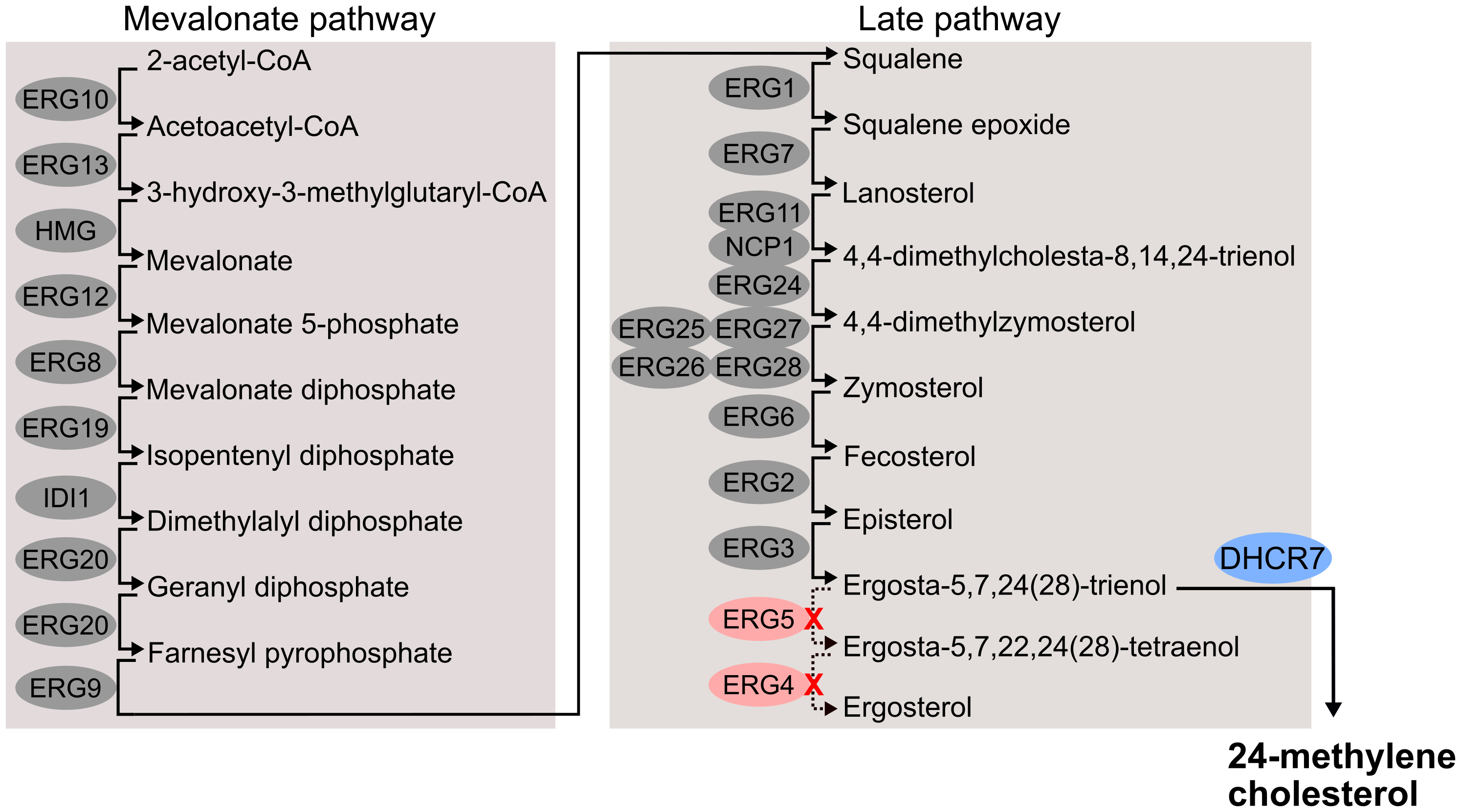Powdery mildew fungi have atypical sterol pathway
Background
Ergosterol is a vital component of fungal cell membranes, playing a crucial role in maintaining membrane fluidity, permeability, and the proper functioning of membrane-associated proteins. The ergosterol biosynthesis pathway is essential for fungal growth and survival, making it a prime target for antifungal drugs, i.e., sterol biosynthesis inhibitors. Although ergosterol is the main sterol in the cell membranes of almost all fungi, some species differ in their sterol composition. One of such species is the grape powdery mildew pathogen Erysiphe necator. Instead of ergosterol, the main sterol in cell membranes of E. necator is 24-methylene cholesterol (Debieu et al. 1995, Loeffler et al. 1992). However, it is not clear whay E. neacator and other powdery mildew fungi have atypical sterol composition.
Major findings
After reconstructing the sterol bisynthesis pathway in E. necator, I observed that the last two genes, ERG4 and ERG5, in this pathway are missing. This potentially explains the overall absence of ergosterol in E. necator, but does not explain the presence of 24-methylene cholesterol. A study demonstrated that deletion of ERG4/ERG5 and inclusion of the gene DHCR7 in yeast results in the production of 24-methylene cholesterol Yang et al. 2021. Considering that E. necator and other powdery mildews have homologs of DHCR7, I proposed that DHCR7 is involved in the biosynthesis of 24-methylene cholesterol in powdery mildew fungi.

